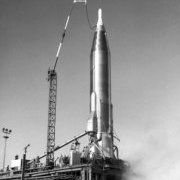
afoxbat
Members-
Content Count
176 -
Joined
-
Last visited
About afoxbat
-
Rank
afoxbat

Profile Information
-
Gender
Male
-
Location
Abilene,Tx
-
Interests
Military aviation, Navair- almost exclusively prior to TAILHOOK, WWII, NUC stuff, military History, Soviet aviation
Recent Profile Visitors
4,144 profile views
-
Mr Patrick Hawkey did an Excellent job on correcting the C&H issue. I wouldn’t mind if he provided some specific instructions as to the corrections either! His kit looks really good! As for vortex generators, they put them on the canopy, (because at higher speeds), they’d get flow separation due to the bulbous nose. This would cause buffeting and rudder ineffectiveness at certain speed envelopes. Hence, the generators; similar to the VG’s on the B-47 ailerons. Speaking of which, there is a fine gentleman and exquisitely master modeler in Japan who helped me with my vortex gener
-
Good show! 👍👍👍 foxbat
-
Griffin2929, Just my two cents; I’d jump at Tom’s offer. The kit’s not too bad and they’re not to be had. Plus, it’ll look great next to you F-105.....😉👍 foxbat
-
RVHP makes a resin conversion for the Hasegawa kit ( a LOT OF WORK ), and Grand Models makes one for the Meng F-102. He’s out of Greece and it looks pretty doable. Xtraparts did a vacuform conversion centuries ago; but not sure?? These are ALL 1:72nd conversions, not 1/48. The C&H kit is pretty good ( even has decals ), but think it’s the only 1/48 kit. And yes, they’re pretty hard to find and not really cheap. foxbat
-
Hey, you’re most welcome! Looks like you’re building a brute!! Load out sounds quite intimidating! I agree with you on your reference resource. Yefim Gordon is superlative! He gave me some great info for my Yak-28! And the Reskit is really good stuff. Have used them for awhile and have NOT been disappointed. Their R-40’s are the best. Sounds if you’ve done you homework in this bird! Hope you post some pictures of your build when finished. I’d be interested. Good building! afoxbat
-
No sweat! Really hoped it helped you a bit.👍 afoxbat
-
Howdy Modelkeenfan, I think the issue may perhaps be the following: Early model Floggers sat really nose high; late model Mig-23’s were still nose high, but much LESS acute. Check out Doogs Models on the “MiG-23 landing gear pickle”. He explains it more thoroughly. Trumpeter was covering both early and late models? I’m certainly no expert on the MiG-23; but typically, when a modern jet was fully loaded vs. “light”, the only way you could distinguish the difference was by measuring the oleo struts- and it was in an inch or two. Put the bird on stands for a LDG drop check and those o
-
Marine RF-4B’s and F-4S’s. Most of the USN Phantoms had been retired in lieu of F-14’s/18’s by then.
-
Don’t know what scale you’re working with but I’ve used those glass / acrylic beads used in bead art for 1/32 and 1/48. If you cut them in half, they also make nifty anti collision lights in 1/72. Just a thought. afoxbat
-
Whitey, Looks like you solved my query! Pictures are great too! And the logic is perfect. Bet it got really hot back there especially with the APU running. Truly fascinating! And many thanks for posting this. I was always curious as to the function that hatch served. How did you acquire that interior shot of the hatch??? Really cool! Again, Thank you! Brendan
-
Don, It totally makes sense! Why have camera installations in two different aircraft locations? Also, the strike camera was probably the vertical one and the post strike one was the oblique camera. ( Just guessing ). Post drop, the plane would’ve probably banked at, at least 45 degrees to determine drop effectiveness. At that angle, the vertical camera would’ve been next to useless. So, sounds entire plausible to me. Really like the cutaway too! Thanks! Brendan
-
Hey guys, So appreciate the input! It looks like it and the vertical camera installation were both in/at the same place. But the APU Was ALSO aft of that pressure bulkhead. I Remember stories from my uncle that the flight engineer HAD to have something open “ back there “ for ventilation. And also have it secured WELL prior to climb out. Also, this APU, having caught fire, may have been the demise of the “Kee Bird” recovery several years ago. Regardless, I really appreciate y’all’s information and interest! Sincerely, Brendan
-
82Whitey51, Thanks for the fine photos of the “Gay”. The B-29 was SUCH a cool bird and the pinnacle of WWII technology - an essentially MECHANICAL Gun laying computer for the turrets! How cool is that? My uncle used to fly them and later in B-50/ KB-50’s. The stories....! Perhaps you might answer a query: in the upper picture above the number “2” on the Enola Gay ( aft fuselage ), is that a camera port or what? I’ve never been able to figure it out. Any info would be appreciated. Many Thanks! Brendan
-
Eric, Glad to have been some help. Regardless, if you do a build, sure like to see it when done, regardless of fin flash. Personally, I like the Circle Arrow too! Brendan
-
Eric, Am pretty sure it was Circle R. The 509th aircraft were actually coded Circle Arrow; but they put on deceptive fin codes to act as a ruse in disguising the “Atomic Bombers” . Brendan



